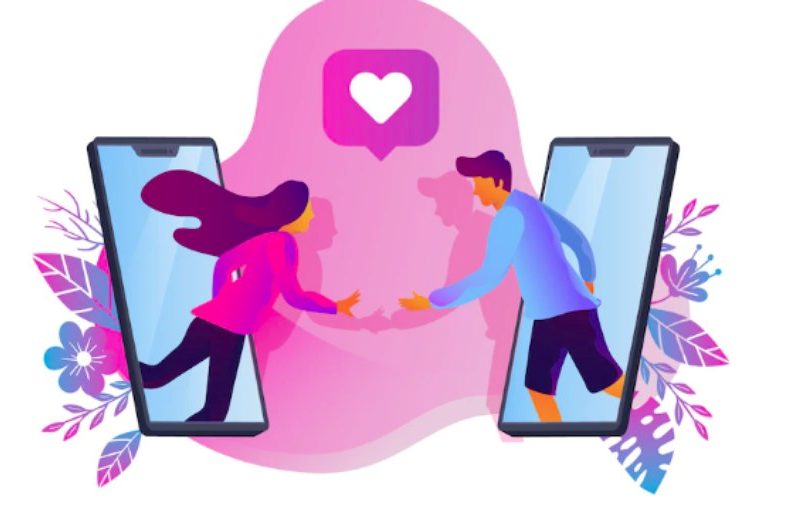ads
The digital world has increasingly transformed the way people connect. Dating apps are a clear example of this change, allowing millions of people around the world to find partners, share interests, and, in many cases, build lasting relationships. Below, we will explore some fascinating facts about the most downloaded dating apps worldwide.
1. The evolution of dating apps
The history of dating apps began in the late 1990s with websites like Match.com. However, it wasn’t until the mobile technology boom that these apps started reaching their true potential. In recent years, dating platforms have become more personalized and dynamic, leading to increasing popularity across various age groups and locations.
What started as a simple tool to facilitate casual encounters has evolved into a global phenomenon. With innovative features like artificial intelligence, advanced matchmaking, profile videos, and even security features, dating apps have become an essential part of daily life for millions of people.
2. The global impact of dating apps
Among the most popular apps are Tinder, Badoo, Bumble, and OkCupid. All of these apps have millions of users around the world. Tinder, for example, is one of the most downloaded of all time, with over 50 billion matches since its launch. It revolutionized the way people meet, with its simple swipe-right or swipe-left system, and is still one of the dominant platforms.
Badoo, in turn, is popular in several countries like Brazil, Russia, and India. This app is one of the largest when it comes to active users, allowing not only romantic encounters but also friendships. Bumble, on the other hand, stands out for giving women the power to start the conversation, a feature that has helped differentiate it in the competitive market.
ads
3. The geography of dating apps
One of the most interesting facts about dating apps is how they vary by region. While Tinder is widely popular in the Western world, platforms like Tantan (in China) and Badoo dominate markets in different parts of the world.
In India, arranged marriage is still a culturally significant practice, but dating apps like TrulyMadly are becoming increasingly popular, offering a modern alternative to traditional arranged encounters.
In Japan, the dating app market is somewhat more conservative, but Pairs has stood out as a successful platform focused on serious relationships, attracting a crowd seeking something deeper.
4. What happens behind the matchmaking algorithm?
Dating apps use complex algorithms to connect people based on preferences, behaviors, and even psychological traits. Tinder, for example, uses an algorithm that learns users’ preferences over time. The more you interact with profiles, the more the app tries to understand what you’re looking for in a partner.
The matchmaking algorithm goes beyond simple preferences like age and location. It now considers factors like shared interests, message patterns, and even user behavior within the app to optimize the chances of success. This helps apps make more meaningful and lasting connections.
ads
5. How technology influences the world of dating apps
Artificial intelligence (AI) has become a fundamental part of the functioning of these apps. In addition to the matchmaking algorithm, developers have incorporated AI to improve profile suggestions, learn from user interactions, and even verify profile authenticity.
Some apps like Tinder are beginning to test new AI-based features, such as image recognition to ensure profiles are not using fake photos. Moreover, AI can help suggest conversation topics based on shared interests in each user’s profile, increasing the likelihood of a good interaction.
6. Dating apps focusing on serious relationships
While many popular dating apps like Tinder are best known for promoting casual encounters, platforms like eHarmony and Match.com focus on those looking for serious relationships. These apps use detailed compatibility questionnaires and complex algorithms to connect users based on similar values, beliefs, and life goals.
These apps are attracting an increasingly conscious user base that values building a solid relationship, distancing themselves from the “quick dating” approaches dominating other apps.
7. Security in dating apps
As dating apps have grown, the security of users’ data has become a major concern. Platforms like Bumble have implemented security checks to ensure profiles are authentic and that interactions within the platform are safe. Some of these checks include requiring introduction videos and social media authentication.
Furthermore, privacy concerns are prompting apps to adopt stricter measures to protect users’ personal information. Message encryption and the implementation of security filters are just some of the innovations these apps have implemented to ensure a safer environment for users.
8. The rise of dating apps for specific niches
In recent years, there has been a significant increase in the number of dating apps focused on specific niches. There are platforms for professionals, people with specific religious beliefs, and even people looking for interracial relationships.
Apps like JSwipe (for Jews) and Christian Mingle (for Christians) are just a few examples of platforms that cater to people with common interests and values. This trend has been successful, as people are increasingly seeking affinities beyond geographical location and physical appearance.
9. The future of dating apps
As technology continues to evolve, the future of dating apps looks promising. It is expected that, in the coming years, these platforms will become even more integrated into our daily lives, using technologies like augmented reality (AR) and virtual reality (VR) to create immersive dating experiences.
Moreover, the use of artificial intelligence will be crucial to refine matchmaking algorithms, making them more accurate and personalized. The development of more inclusive dating platforms, focused on security and emotional well-being, is also becoming a priority for many of these apps.
Dating apps have transformed from simple social interaction tools into powerful platforms that connect millions of people around the world. With technological advancements and the growing demand for personalization, we can expect these apps to continue evolving, offering a richer and safer experience for their users.



